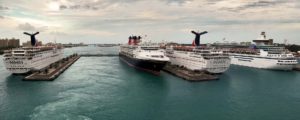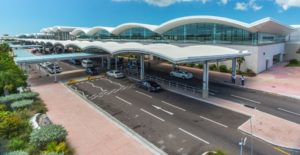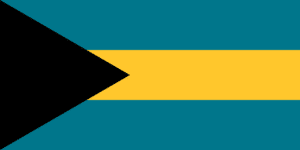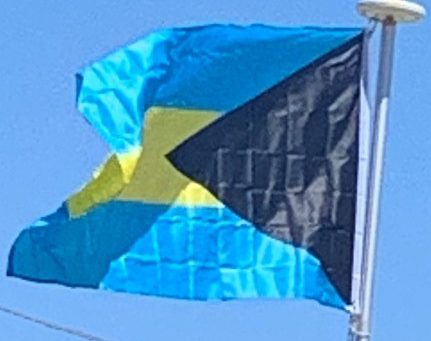
Facilities catering to large passenger cruise ships are located on Grand Bahama Island and New Providence. The Lucayan Harbour Cruise Facility in Freeport and Nassau harbour’s Prince George Wharf are built specifically to handle multiple modern cruise ships at one time. Additionally, several major cruise line corporations have each purchased an uninhabited island which they now operate as private island destinations available exclusively to their respective ships. These include Great Stirrup Cay, owned by Norwegian Cruise Line, Little Stirrup Cay otherwise known as Royal Caribbean International’s “Coco Cay”, Carnival Corporation’s Little San Salvador Island or “Half Moon Cay”, and Castaway Cay, of Disney Cruise Line. Of these, only Castaway Cay offers ships an actual pier for docking. The others use tender boats to service ships anchored off shore.
Airports:
The main airports on the islands are Lynden Pindling International Airport on New Providence, Grand Bahama International Airport on Grand Bahama Island, and Marsh Harbour International Airport on Abaco Island. Out of 62 airports in all, 23 have paved runways.

Bahamasair is the national flag carrier airline of the Bahamas.[2]
Heliports:
A heliport is located on Paradise Island, as well as other smaller islands, such as the various cruise line private islands.
Railways:
There are no railways in the Bahamas.
Flag of the Bahamas:
The national flag of the Bahamas consists of a black triangle situated at the hoist with three horizontal bands: aquamarine, gold and aquamarine. Adopted in 1973 to replace the British Blue Ensign defaced with the emblem of the Crown Colony of the Bahama Islands, it has been the flag of the Commonwealth of the Bahamas since the country gained independence that year. The design of the present flag incorporated the elements of various submissions made in a national contest for a new flag prior to independence.

History:
The Bahamas became a crown colony of the United Kingdom within its colonial empire in 1717. Under colonial rule, the Bahama Islands used the British Blue Ensign and defaced it with the emblem of the territory. This was inspired by the ousting of the pirates, and consisted of a scene depicting a British ship chasing two pirate ships out at the high seas encircled by the motto “Expulsis piratis restituta commercia” (“Pirates expelled, commerce restored”). The emblem was designed in around 1850, but did not receive official approval until 1964.
The Bahama Islands were granted internal autonomy in 1964. After the 1972 elections, the territory started negotiations on independence. A search for a national flag began soon after, with a contest being held to determine the new design. Instead of choosing a single winning design, it was decided that the new flag was to be an amalgamation of the elements from various submissions. It was first hoisted at midnight on 10 July 1973, the day the Bahamas became an independent country. The new country also changed its name from the Bahama Islands to The Bahamas upon independence.
Design:
The colors of the flag carry cultural, political, and regional meanings. The gold alludes the shining sun– as well as other key land-based natural resources – while the aquamarine epitomizes the water surrounding the country. The black symbolizes the “strength”, “vigor, and force” of the Bahamian people, while the directed triangle evokes their “enterprising and determined” nature to cultivate the abundant natural resources on the land and in the sea.
